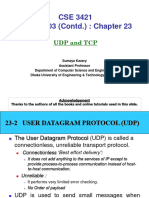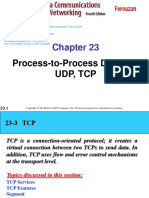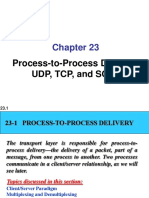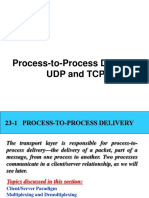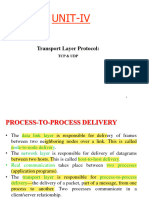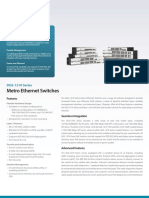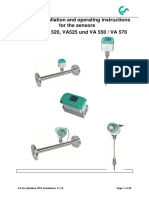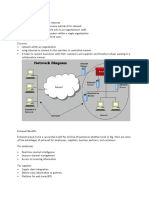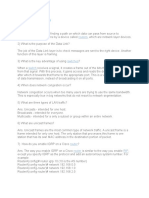0% found this document useful (0 votes)
17 views61 pagesTopic6-Transport and Link Layers Protocols
The document discusses the transport layer's role in process-to-process delivery, highlighting the differences between connectionless (UDP) and connection-oriented (TCP) services. UDP is characterized as an unreliable protocol that facilitates simple communication without establishing a connection, while TCP ensures reliable data transfer through connection establishment, flow control, and error correction mechanisms. The document also outlines the operational details of both protocols, including packet structure, error handling, and the significance of well-known ports.
Uploaded by
thngziqinCopyright
© © All Rights Reserved
We take content rights seriously. If you suspect this is your content, claim it here.
Available Formats
Download as PDF, TXT or read online on Scribd
0% found this document useful (0 votes)
17 views61 pagesTopic6-Transport and Link Layers Protocols
The document discusses the transport layer's role in process-to-process delivery, highlighting the differences between connectionless (UDP) and connection-oriented (TCP) services. UDP is characterized as an unreliable protocol that facilitates simple communication without establishing a connection, while TCP ensures reliable data transfer through connection establishment, flow control, and error correction mechanisms. The document also outlines the operational details of both protocols, including packet structure, error handling, and the significance of well-known ports.
Uploaded by
thngziqinCopyright
© © All Rights Reserved
We take content rights seriously. If you suspect this is your content, claim it here.
Available Formats
Download as PDF, TXT or read online on Scribd
/ 61





